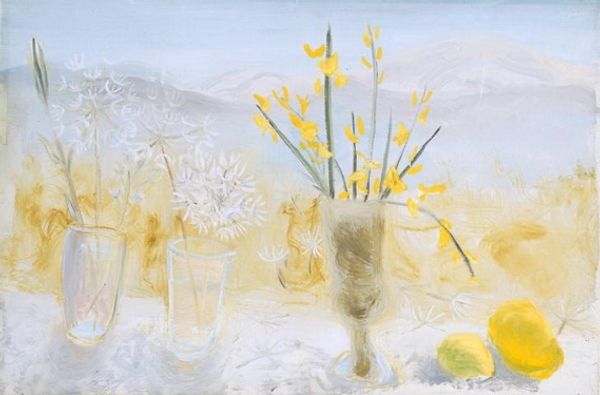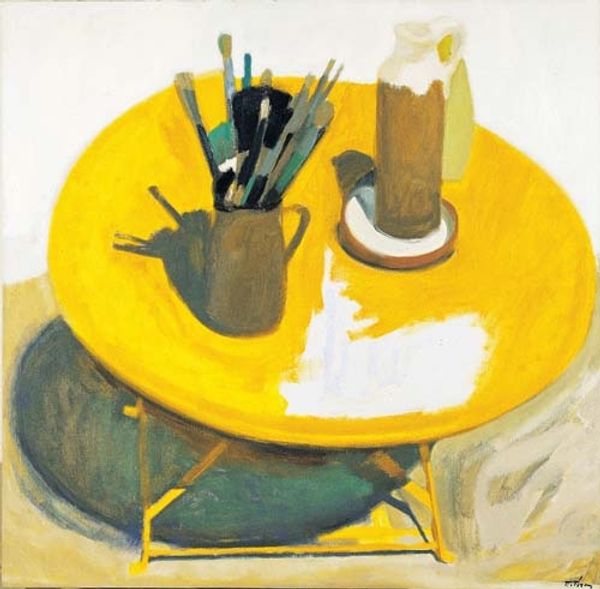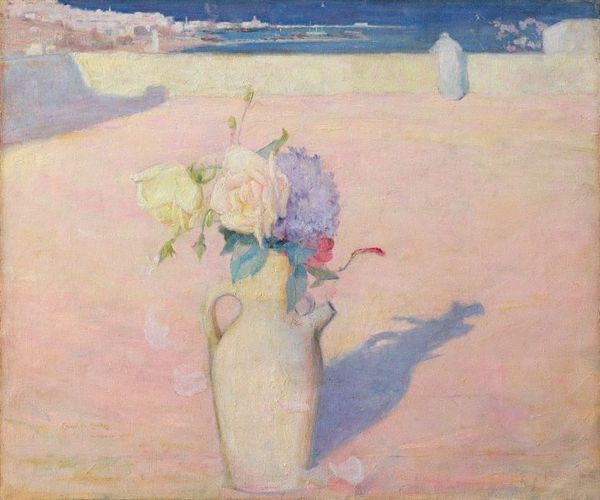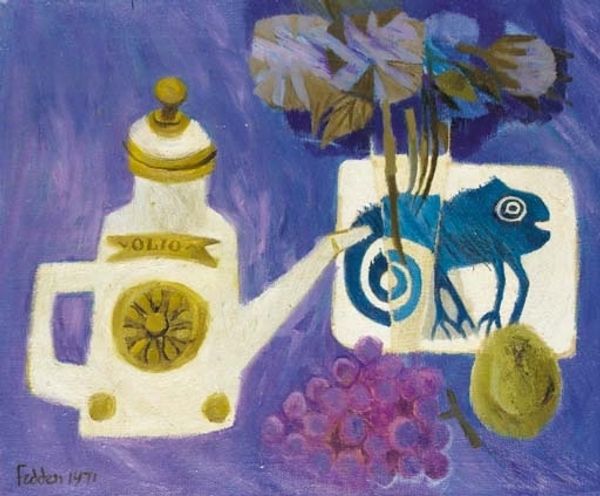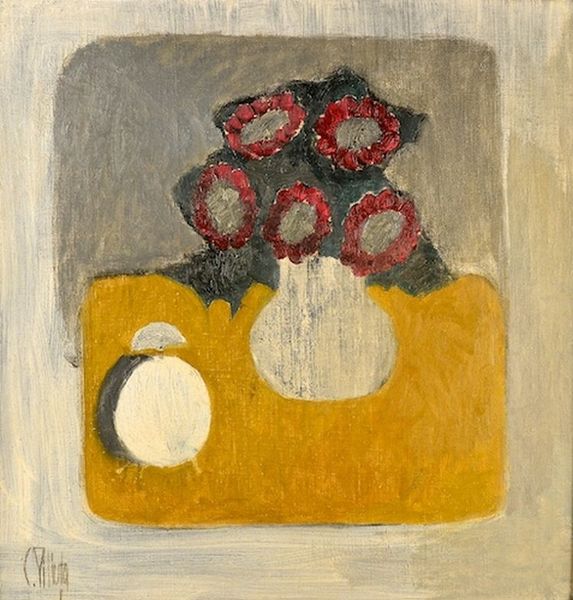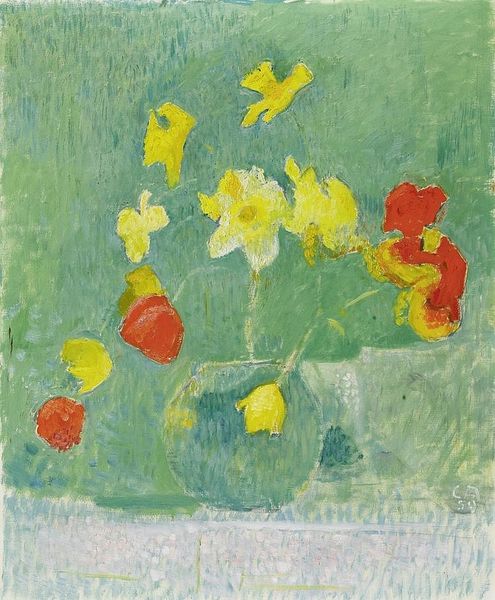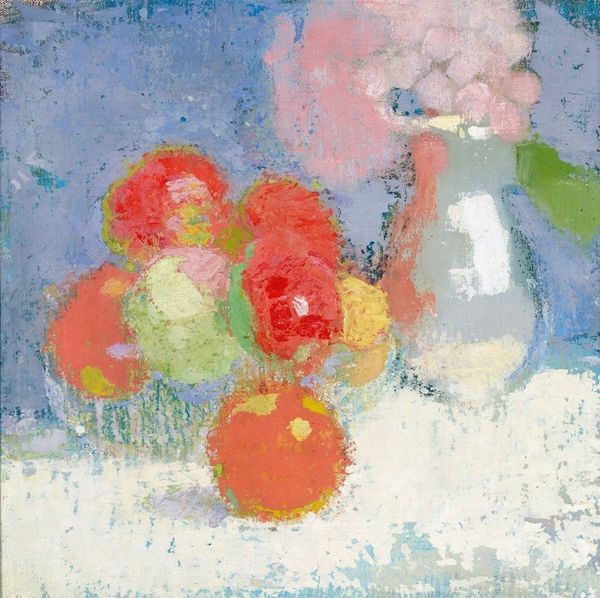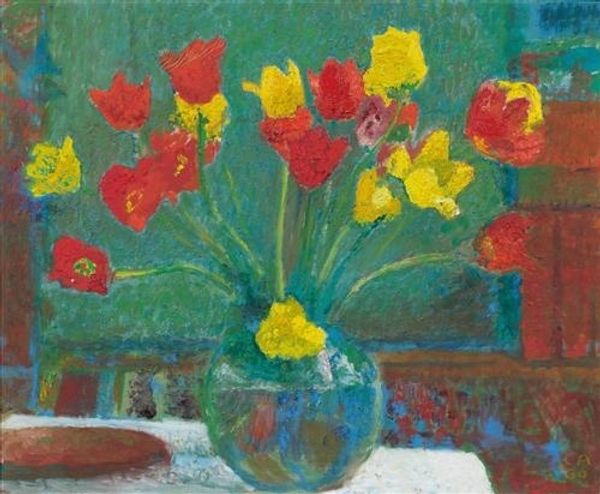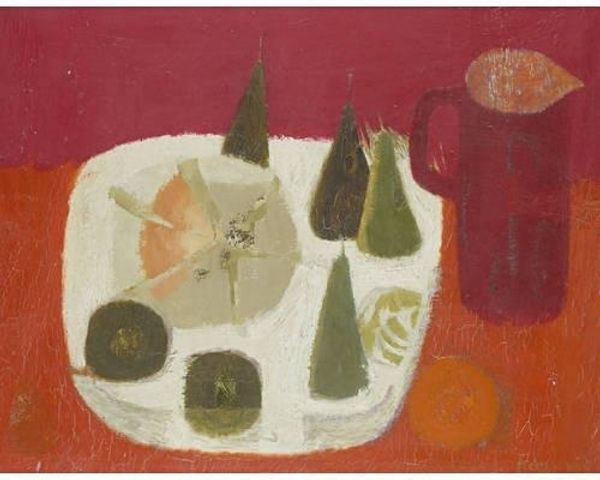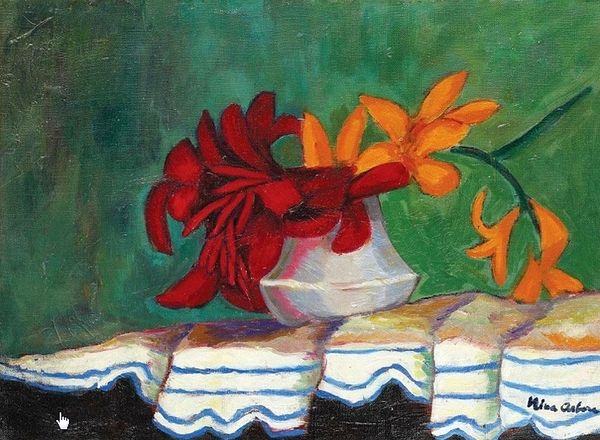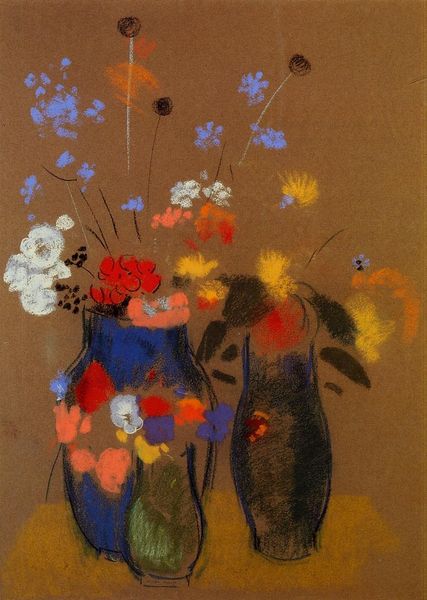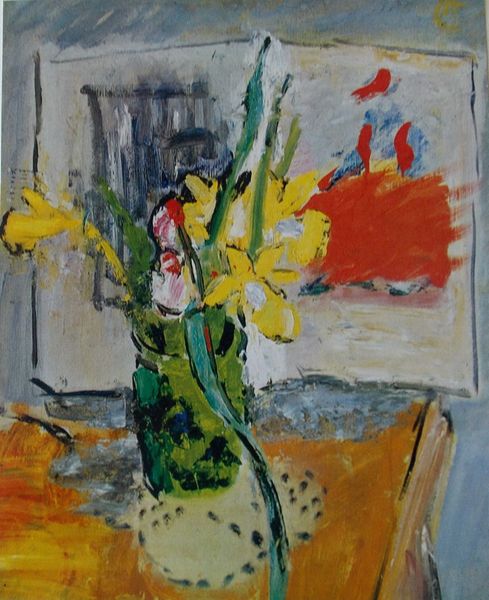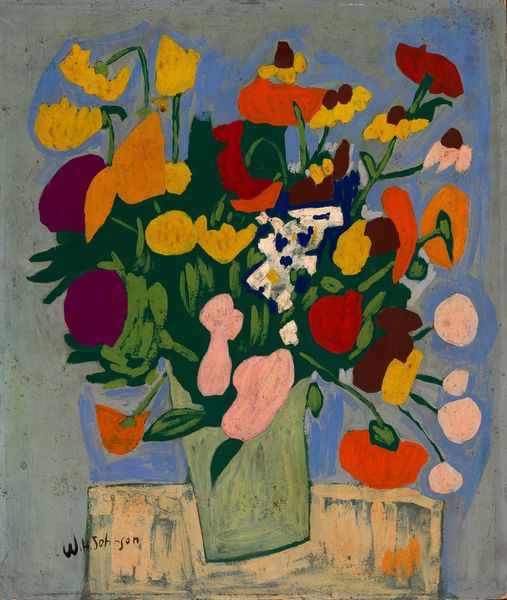
Copyright: Winifred Nicholson,Fair Use
Curator: This painting absolutely sings! The sunlight, those happy dafs... It feels like the beginning of a perfect spring day. Editor: And what a day in 1936 it must have been when Winifred Nicholson painted this gouache on board titled, "Kate's Flowers." Nicholson lived a rather unconventional life as a painter in the 20th century and her artistic interests involved painting still life, landscape, and abstract painting. Curator: Unconventional is a lovely word for it. I see a refusal to be boxed in by style or expectation. These blooms are anything but conventional. They're exploding from a lemon-yellow pitcher set against what could be a window onto the world… or is it another dreamscape entirely? The flowers appear simple, almost child-like. Editor: The "child-like" quality could certainly reflect the socio-cultural shift occurring with children's education and art in the interwar years. This interest would allow the celebration of simplicity and direct expression, and of natural spontaneity. What a far cry from academic realism. We see Nicholson embracing something truly fresh. The lack of pretense aligns, also, with broader trends of the interwar years celebrating folk traditions and 'authenticity.' Curator: Absolutely. It has that folk quality. But don't underestimate its sophistication, the careful composition of colors is extraordinary. It’s almost humming, as the yellow advances against the greys and blues and those specks on the table add a bit of unexpected magic, a dance across the surface! Editor: It’s interesting to observe that many women artists turned to intimate subjects, domestic still life during this era and one reason posited, and rather a limited reading, has been that they were confined by domesticity. Nicholson, herself, had quite a productive artistic practice. What looks like, at first, an unassuming still life in fact might provide some level of freedom or an exploration of private and safe worlds through color. Curator: Yes. A painting can be a world of one’s own creation. As we wrap up here, the best way to experience "Kate’s Flowers," perhaps, is just to give yourself over to it—bathe in its joyful glow and consider how a quiet arrangement speaks so loudly. Editor: "Kate’s Flowers" truly exemplifies how Nicholson brought avant-garde awareness to domestic scenes in ways that invite us to re-evaluate what we deem valuable and beautiful.
Comments
No comments
Be the first to comment and join the conversation on the ultimate creative platform.
